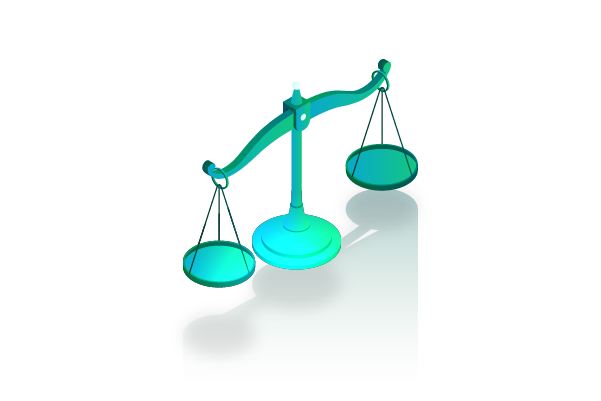In the intricate web of the financial markets, technology has carved out new paths and strategies for traders aiming to gain an edge over their competitors. Among these technological advancements, front running bots have emerged as a pivotal tool for some, while stirring controversy and ethical debates among market participants. This article dives deep into the realm of automated trading strategies, particularly focusing on the concept, operation, and implications of front running bots. By unraveling the complexities behind these bots, we aim to provide a clearer understanding of their role in today’s trading landscape.
Front running, in its traditional sense, involves the practice of executing trades based on advance knowledge of pending transactions that will influence the price of an asset. When this concept is translated into the digital age, front running bots automate this process, leveraging algorithms to detect and execute trades at lightning speed. This not only raises questions about fairness and market integrity but also prompts a reevaluation of regulatory frameworks.
As we explore the functionalities and consequences of front running bots, it’s crucial to approach the topic with a balanced perspective. These bots represent a confluence of technological innovation and strategic trading, embodying both the potential for profit and the risk of destabilizing markets. By understanding their mechanics, impacts, and the ethical lines they blur, stakeholders can navigate the evolving trading environment more effectively.
Understanding Front Running Bots
Front running bots are a type of automated trading software designed to gain an advantage in financial markets by executing trades based on anticipated future transactions that are expected to impact asset prices. These bots leverage both public and non-public information to detect signals of upcoming large trades or a sequence of trades that could significantly affect the price of a particular asset. Once such a signal is detected, the bots quickly place orders ahead of these trades to profit from the resulting price movement.
The operation of front running bots involves a high level of sophistication and speed, primarily because they compete to outpace human traders and other automated systems. They analyze market data in real-time, identifying patterns or orders that suggest a major trade is about to happen. For instance, if a large buy order is detected, a front-running bot might purchase shares of the stock before the order is executed, anticipating that the stock’s price will rise once the large order goes through. The bot can then sell the shares at a higher price, securing a profit from this activity.
Also Read: What is ERC404?
The ethical and legal implications of using front running bots are complex and widely debated. In many markets, front running is considered illegal or unethical when it involves using non-public information to trade. However, the definition and enforcement of front running laws can vary significantly across different jurisdictions and are particularly challenging to apply in the context of high-speed, algorithmic trading.
Moreover, the presence of front running bots in financial markets raises questions about market fairness and integrity. These bots can create an uneven playing field, where those with access to the fastest technologies and most sophisticated algorithms have a distinct advantage over regular investors. This scenario can lead to wider market implications, including increased volatility and potentially undermining investor confidence.
Regulatory bodies and exchanges continuously scrutinize and adapt their policies to manage the impact of automated trading and front running. Measures such as improved surveillance, stricter regulations, and the introduction of speed bumps (deliberate delays in order execution) are some of the strategies being employed to mitigate the effects of front running and ensure a fairer trading environment for all market participants.
The Impact on Markets
The impact of front running bots on financial markets is a complex and multifaceted issue that influences both the operational dynamics of these markets and the perception of fairness among participants. Front running bots, which are automated systems designed to execute trades at a speed unattainable by human traders, leverage advanced algorithms to anticipate and act on market movements before the bulk of the market participants can react. This can have several consequences:
Increased Liquidity and Efficiency
By injecting a higher volume of transactions into the market, these bots can reduce bid-ask spreads—the difference between the highest price a buyer is willing to pay and the lowest price a seller is willing to accept. This can make it easier for all market participants to execute their trades at desired prices, thus enhancing the overall efficiency of the market. The increased transaction volume can also add liquidity, making the market more robust and less susceptible to large price swings due to individual trades.
Exacerbated Price Movements
While front running bots can contribute to market efficiency, they can also amplify price movements. By quickly acting on information or anticipated future trades, these bots can create rapid price changes that other market participants must then respond to. This can lead to a feedback loop where the initial price movement is exaggerated, increasing market volatility. High volatility can make trading riskier and more unpredictable, which might deter less aggressive participants.
Disadvantages for Regular Traders
The superior speed and efficiency of bots place regular traders, who do not have access to similar technology, at a significant disadvantage. These traders cannot compete on equal footing with bots that can execute trades in milliseconds based on information or anticipated events that have not yet impacted the broader market. This disparity can lead to situations where regular traders find themselves consistently outpaced and unable to execute trades at favorable prices.
Loss of Confidence in Market Fairness
Perhaps one of the most concerning aspects of the proliferation of front running bots is the potential erosion of confidence among market participants. When traders perceive that they are at a systemic disadvantage against automated systems, they may lose faith in the fairness and integrity of the market. This loss of confidence can have long-term negative effects on market participation, particularly among retail investors who may feel that the market is rigged against them.
In sum, while front running bots can contribute to certain operational efficiencies within financial markets, their presence also raises important questions about market fairness, volatility, and the balance between technological advancement and equitable access. Policymakers, regulatory bodies, and market operators must navigate these challenges carefully to ensure that the benefits of technology do not come at the expense of market integrity and investor confidence.
Ethical Considerations of front running bots

Front running bots have become a controversial topic within the realms of finance and cryptocurrency markets, sparking a significant ethical debate. On one hand, proponents of these bots argue that they represent a natural evolution in market strategies, leveraging cutting-edge technology to identify and act on trading opportunities faster than human traders can. This perspective is grounded in the belief that the utilization of such advanced tools is a form of competition that pushes markets towards greater efficiency and innovation.
Critics, however, offer a starkly different view. They contend that front running bots distort the fairness of the market. By exploiting information and executing trades at speeds unattainable by most participants, these bots can create an uneven playing field. This disparity is seen as a form of market manipulation, where the bots’ ability to act on information before it becomes widely available undermines the foundational market principle that all participants should have equal access to information. Critics argue that this not only disadvantages individual and less technologically-equipped traders but also erodes trust in the market’s integrity.
This ethical dilemma poses significant challenges for regulatory bodies. Regulators are tasked with the dual objectives of encouraging technological advancement and innovation in financial markets, while at the same time safeguarding the principles of fairness and transparency that underpin market integrity. Finding a balance between these goals requires careful consideration of the impacts of front running bots on market dynamics. Regulators must decide whether the efficiency gains offered by these bots are worth the potential for increased market inequality and whether new rules or regulations are needed to address the unique challenges posed by high-speed, algorithmic trading strategies.
Regulatory challenges and responses to front running bots

The regulatory challenges and responses to front running bots in financial markets involve a nuanced balance between innovation and investor protection. Front running, a practice where traders capitalize on advance knowledge of other traders’ orders to execute advantageous trades, becomes significantly more sophisticated with the use of bots. These automated systems can execute transactions at speeds unattainable by humans, exploiting information and market positions milliseconds before others can react. This practice, when amplified by the capabilities of bots, raises profound concerns about market fairness and integrity.
The complexity of regulating this issue stems from several factors:
- Global Nature of Financial Markets: Financial markets operate across borders, making it difficult for any single regulatory body to enforce rules effectively. Transactions can be initiated from anywhere, and assets can move across jurisdictions in moments, complicating oversight.
- Speed and Anonymity: Bots can execute trades within fractions of a second, and identifying the entities behind these transactions can be challenging. This speed and anonymity make it difficult for regulators to detect and prove front running activities.
- Technological Advancements: The rapid pace of technological innovation in trading algorithms and strategies outstrips the speed at which regulatory frameworks can adapt. As such, regulators often find themselves playing catch-up with the latest advancements.
- Diverse Regulatory Environments: Different countries have different rules and levels of enforcement related to trading practices, leading to a patchwork of regulatory standards. This diversity can create loopholes that sophisticated trading operations can exploit.
Regulatory bodies worldwide are responding to these challenges by updating and adapting their frameworks. Efforts include:
- Enhanced Surveillance and Analytics: Regulators are investing in technology to better monitor trading activities and identify patterns indicative of front running and other manipulative practices.
- International Cooperation: Recognizing the cross-border nature of the problem, regulatory bodies are increasingly collaborating through international forums and agreements to share information and harmonize regulations.
- Regulatory Sandboxes: Some jurisdictions have established “sandboxes” where new technologies can be tested under regulatory supervision. This approach allows regulators to understand and devise appropriate rules for emerging technologies without stifolding innovation.
- Clarifying Legal Definitions: To effectively prosecute front running and similar practices, some jurisdictions are revising legal definitions to specifically address the nuances of automated trading.
The goal of these regulatory efforts is to ensure that markets remain fair and transparent, preventing practices that can undermine investor confidence while still fostering an environment where technological advancements can thrive. Balancing these priorities remains a key challenge for regulators globally.
Strategies for Protection Against Front Running

To safeguard against front running, a practice where traders capitalize on advance knowledge of others’ market moves, individuals can employ several strategies. Utilizing limit orders is a primary method. By setting a limit order, investors define the highest price they’re willing to pay for a buy order or the lowest price for a sale, offering a shield against the price manipulations often seen with front running. This approach ensures that trades only execute within predetermined price boundaries, thereby mitigating the risk of adverse price movements initiated by front runners.
Beyond limit orders, staying abreast of technological advancements in the trading sphere is vital. As trading algorithms and bots evolve, they become more sophisticated in detecting and exploiting trading patterns. By understanding these technological shifts, traders can adjust their strategies to minimize exposure to front running activities. This might include diversifying trade execution times, using alternative trading platforms known for better security measures, or employing more complex trading strategies that are harder for bots to predict.
Also Read: Top 10 Blockchain Marketing Companies to Consider in 2024
Moreover, some traders might explore the use of decentralized exchanges (DEXs) where possible. DEXs often offer mechanisms designed to reduce the risk of front running, such as transaction ordering protocols that ensure a fairer trading environment. However, it’s essential to weigh the benefits against potential drawbacks, such as liquidity concerns and differing fee structures.
In essence, by combining the use of limit orders with a proactive approach to staying informed about and adapting to technological trends in trading, individuals can build a more robust defense against the potentially costly impacts of front running.
Conclusion
Front running bots epitomize the intersection of technology and trading, presenting both opportunities and challenges for market participants. As we’ve explored, these automated strategies can enhance market efficiency but also raise significant ethical and regulatory questions. The ongoing evolution of trading technologies necessitates a continuous dialogue among traders, regulators, and the public to ensure that the benefits are maximized while minimizing potential harms.
The future of front running bots and automated trading lies in the balance of innovation and regulation. As technology advances, so too must our understanding and frameworks for managing its impact on financial markets. By fostering an environment that encourages transparency, fairness, and integrity, the financial ecosystem can continue to evolve in a way that benefits all stakeholders.
In sum, the journey into the world of front running bots reveals the complexities of modern trading strategies. It underscores the need for vigilance, ethical consideration, and adaptive regulation in the face of rapid technological change. For traders, staying informed and adaptable is key to navigating this landscape, while for regulators, the challenge lies in crafting rules that protect market integrity without hindering innovation. As we move forward, the collective effort of these groups will shape the future of trading in the digital age.
Disclaimer: The information provided by HeLa Labs in this article is intended for general informational purposes and does not reflect the company’s opinion. It is not intended as investment advice or recommendations. Readers are strongly advised to conduct their own thorough research and consult with a qualified financial advisor before making any financial decisions.

Joshua Soriano
I am Joshua Soriano, a passionate writer and devoted layer 1 and crypto enthusiast. Armed with a profound grasp of cryptocurrencies, blockchain technology, and layer 1 solutions, I've carved a niche for myself in the crypto community.
-
Joshua Soriano#molongui-disabled-link
-
Joshua Soriano#molongui-disabled-link
-
Joshua Soriano#molongui-disabled-link
-
Joshua Soriano#molongui-disabled-link

